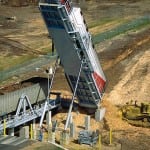Two years ago, FirstEnergy Corp. announced plans to renovate Units 4 and 5 of its R.E. Burger plant to burn biomass fuels. FirstEnergy was working under a deadline—March 31, 2009—to decide what to do with the two units targeted by the U.S. Environmental Protection Agency (EPA) for alleged Clean Air Act violations. A 2005 consent decree required the retrofit of air quality controls or conversion of the two units to biomass. At the time, the $200 million conversion to biomass project seemed the better of the two options.
The design of the Burger retrofits was for a closed-loop biomass plant that is generally considered to be carbon neutral. Fuel would come from trees specifically grown as fuel for the plant, and, while growing, those trees would act as a carbon sink. When the trees were harvested and burned, the carbon would be released, although the net carbon release would be zero.
However, by mid-November 2010 the project was cancelled. The company cited low wholesale energy prices and noted that "expected market prices no longer support a repowered Burger Plant."
The same fate was to befall a number of other large-scale biomass projects, such as the two projects canceled by Progress Energy totaling 100 MW in January 2011 and the Xcel Energy project on Lake Superior in Ashland. Another project is the proposed plan by Georgia Power to convert a 155-MW coal-fired plant near Albany, Ga., to produce 90 MW from biomass. That project has been delayed because of pending EPA rulemaking on emissions limits from industrial boilers. Georgia Power is still assessing that conversion project.
Biomass projects are also in retreat internationally. In March, Adage LLC, formed by the French nuclear company Areva and Duke Energy, announced that it will drop plans to build and operate a fleet of biomass plants in the U.S. using wood fuel to produce electricity. Adage cited low natural gas prices and weak state renewable electricity mandates that have weakened the economics of these projects. Adage spokesman Tom DePonty said the joint venture has no immediate plans to dissolve, but "for the time being will not be investing in development. In general, low gas prices are driving down demand for these kinds of projects," he said.
Adage was established in 2008 to develop a series of biomass-fueled power plants in the U.S., starting with a 65-MW plant planned for Mason County, Wash., followed by a 50-MW plant planned for Hamilton County, Fla. DePonty said that although the Florida plant recently obtained its essential land use and air permits, that project is "in the process of being wound down."
Also cited as a reason for shuttering plans for these two projects was the unpredictability of the pending boiler MACT rules and their application to biomass projects. Since the announcement of those rules, Massachusetts, the only state that has officially determined that biomass combustion is not carbon neutral, has proposed that tough new greenhouse gas standards be applied to large wood-burning power plants.
New Projects Pending
However gloomy the utility biomass power segment appeared in 2010, new projects have been recently announced. Perhaps the most interesting are the three coal plants that Dominion announced will be converted to burn biomass. The early April announcement says that three 60-MW coal units located in Virginia’s Altavista, Hopewell, and Southampton Counties will be converted by 2013, pending approval from state regulators. These plants will burn wood waste from logging operations and are being considered as part of Dominion’s plans to meet new air quality rules and to help meet a state goal for utilities to produce 15% of their power from renewable resources. After conversion, each of the units will produce about 50 MW but will run with high capacity factors rather than only a times of peak demand, as the units do today.
Other projects are also moving forward. In mid-May, We Energies’ proposed $255 million biomass plant in central Wisconsin at a paper mill was given the regulatory go-ahead. In Canada, a $208 million project proposed by Nova Scotia Utility was approved in October 2010. And NRG Energy Inc. is constructing a 15-MW biomass plant at its Dunkirk Generating Station in western New York that is scheduled for completion by the end of 2011.
As of April 2011, the top 10 states with the most operating plants and proposed projects were:
- California, 22
- Florida, 16
- New York, 14
- New Hampshire, 14
- Maine, 11
- Michigan, 11
- Massachusetts, 10
- Minnesota, 9
- Pennsylvania, 9
- Connecticut, 8
The common denominator of these projects is that they are generally 50 MW or less—much smaller than the larger coal-to-biomass conversion projects that haven’t fared well in the marketplace.
Another Approach
Another approach now being considered by utilities that is less intrusive than a complete repowering to burn biomass is cofiring biomass in existing coal-fired plants. Richard P. Storm, president of Innovative Combustion Technologies Inc., shares with us his company’s recent experience of biomass cofiring tests run on a 60-MW coal-fired plant. The tests, which included tangentially fired and wall-fired units, examined the impact of different wood chip fineness on pulverizers, boiler performance, and emissions. That presentation can be viewed here.
—Dr. Robert Peltier, PE is COAL POWER’s editor-in-chief.










